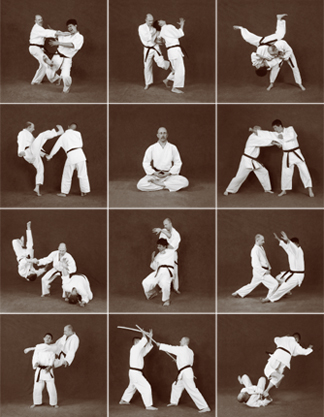Like many Asian martial arts, Hapkido emphasizes the unification of body, mind, and spirit; the perfection of human character; self-empowerment; social responsibility; and appropriate use of force. Unlike most martial arts, Hapkido utilizes more than 1100 core techniques, which are intuitively modified or combined to create thousands of variations. Self-defense techniques are characterized by a constant flow of striking, blocking, holding, and throwing techniques. Constant motion and fluid circular movements are designed to blend with an opponent’s force. Tactics often alternate between highly aggressive and defensive modes, with power being generated through use of one’s entire body. Internal energy development is fundamental to all training, leading to increased health and greater efficiency in self-defense techniques.
Hapkido techniques are not only for self-defense. Meditation and healing techniques are used to develop emotional stability, peace of mind, and confidence, while providing the same health benefits found in other arts, such as Tai Chi Chuan and Qi-Gong. Thus, Hapkido is a highly practical self-defense art with strong spiritual underpinnings.
In contemporary society, Hapkido is mostly practiced for self-defense, health, and spiritual growth. Although it is often compared to Aikido, Taekwondo, Jujutsu, Judo, and Tai Chi Chuan, it has a much broader range of techniques, suitable in a wider range of situations. This has made it adaptable to a wide range of body physiques, personalities, and lifestyles. Hapkido is currently practiced by a diverse range of men, women, and children of all ages; working professionals; gifted athletes; the physically impaired; those simply seeking physical exercise; as well as military and law enforcement professionals. Hapkido is practiced in over 100 countries and continues to expand rapidly worldwide.







